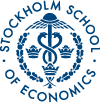No 661: Risk and Mortality of Recurrent Breast Cancer in Stockholm 1985-2005
Bengt Jönsson (), Jonas Lundkvist, Frida Kasteng, Mathias Lidgren, Jan Adolfsson, Jonas Bergh, Tommy Fornander and Nils Wilking
Additional contact information
Bengt Jönsson: Dept. of Economics, Stockholm School of Economics, Postal: Stockholm School of Economics, P.O. Box 6501, SE-113 83 Stockholm, Sweden
Jonas Lundkvist: Karolinska Institutet, Postal: Stockholm
Frida Kasteng: European Health Economics, Postal: Stockholm
Mathias Lidgren: Karolinska Institutet, Postal: Stockholm
Jan Adolfsson: Onkologiskt Centraum, Karolinska University Hospital, Postal: Stockholm
Jonas Bergh: Radiumhemmet, Karolinska Institutet och University Hospital, Postal: Stockholm,
Tommy Fornander: Dept of Oncology, Karolinska University Hospital at Södersjukhuset, Postal: Stockholm
Nils Wilking: Karolinska Institutet, Postal: Stockholm
Abstract: The purpose of this study was to estimate the risk and mortality of breast cancer recurrences in Swedish women, and to analyse changes over time and variations between patients in different risk groups. Such estimates are of key importance for modelling the cost-effectiveness of different strategies for adjuvant treatment of breast cancer.
The study was based on all women diagnosed with breast cancer in Stockholm County between 1985 and 2005. Information about dates for locoregional recurrences, metastatic relapses, new contralateral tumours and death was collected. Cox proportional hazard and Weibull regression models were used to estimate survival functions, where year of diagnosis (dived into 5-year intervals), were included as explanatory variables in the models.
The risk of recurrences has decreased during the last 20 years for all three types of recurrence; for metastatic relapse the 5-year risk was reduced from 12.9% to 6.0% from 1985-90 to 2000-2005 . Mortality has also been reduced, resulting in an increased 5-year survival from 52.6% to 64.1% after locoregional recurrence and from 10.4% to 15.5% for metastatic relapse. For contralateral tumours, with a 5-year survival rate of 74.6% in 1985-1990 and 78% 2000-2005, no significant increase was observed. Analysis of risk groups according to TNM classification showed large difference in the risk of metastatic breast cancer between the three defined groups, but small differences for the risk of locoregional recurrences and new contralateral tumours.
The findings indicate that the early detection and new treatments have been successful in improving outcome for breast cancer patients and that it is important to use up-to-date information, when assessing the value of new treatment options.
Keywords: Breast cancer; Mortality; Survival; Recurrence; Sweden
JEL-codes: I10
19 pages, May 7, 2007
Full text files
hastef0661.pdfFull text
Questions (including download problems) about the papers in this series should be directed to Helena Lundin ()
Report other problems with accessing this service to Sune Karlsson ().
RePEc:hhs:hastef:0661This page generated on 2024-09-13 22:19:41.

